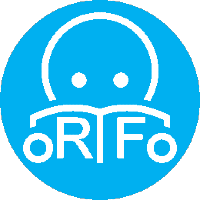ELA-00.RF.01.p1
 Kindergarten (ELA) Targeted Sub-Standard
Kindergarten (ELA) Targeted Sub-Standard
(RF) Strand: Reading Foundations/Skills
Cluster: Print Concepts
ELA-00.RF.01 Demonstrate understanding of the organization and basic features of print.
ELA-00.RF.01.p1 Part 1
-
d. Recognize and name all uppercase and lowercase letters of the alphabet.
 Proficiency Scale Proficiency Scale
 Curriculum Resources Curriculum Resources
|
|
ELA-00.RF.01.p2
 Kindergarden (ELA) Targeted Sub-Standard
Kindergarden (ELA) Targeted Sub-Standard
(RF) Strand: Reading Foundations/Skills
Cluster: Print Concepts
ELA-00.RF.01 Demonstrate understanding of the organization and basic features of print.
ELA-00.RF.01.p2 Part 2
-
a) Follow words from left to right, top to bottom, and page by page
-
b) Recognize spoken words are represented in written language by specific sequences of letters.
-
c) Understand words are separated by spaces in print.
 Proficiency Scale Proficiency Scale
|
|
ELA-00.RF.02
 Kindergarten (ELA) Targeted Standard
Kindergarten (ELA) Targeted Standard
(RF) Strand: Reading Foundations/Skills
Cluster: Phonological Awareness
ELA-00.RF.02 Demonstrate understanding of spoken words, syllables, and sounds (phonemes)
 Teacher Proficiency Scale Teacher Proficiency Scale
Sub-Standards:
a. Recognize and produce rhyming words.
b. Count, pronounce, blend, and segment syllables in spoken words.
c. Blend and segment onsets and rimes of single-syllable spoken words.
d. Isolate and pronounce the initial, medial vowel, and final sounds (phonemes) in three phoneme (consonant-vowel-consonant, or CVC) words. (This does not include CVCs ending with /l/, /r/, or /x/).
e. Add or substitute individual sounds (phonemes) in simple, single-syllable words to make new words.
Student Learning Targets:
Knowledge Targets
- I can recognize words that begin with the same sound (dog/dish).
- I can recognize words that end with the same sound (man/tin).
- I can recognize words that have the same middle sound (pen/bet).
Reasoning Targets
Skills (Performance) Targets
- I can take apart a word and tell you the beginning sound, middle sound and ending sound.
Proficiency Scale
The student can ...
1 Beginning
... with help, demonstrates a partial understanding of some of the simpler details and processes (Score 2.0 content) and some of the more complex ideas and processes (Score 3.0 content).
Novice
2 Developing
... demonstrates no major errors or omissions regarding the simpler details and processes but exhibits major errors or omissions regarding the more complex ideas and processes (Score 3.0 content).
- recognize or recall specific terminology, such as:
- rhyming word, syllable, blend, segment, vowel, consonant, substitute
- perform basic processes, such as:
- (a) recognize rhyming word pairs or sets
- (b) blend and pronounce syllables in a word
- (c) blend onset-rime in words
- (d) isolate the initial sound in CVC words
- (d) isolate the final sound in CVC words
- (e) discriminate between words with same or different initial sounds
3 Proficient
“The Standard.”
... demonstrates no major errors or omissions regarding any of the information and processes that were end of instruction expectations.
- demonstrate understanding of spoken words, syllables, and sounds (phonemes):
- (a) recognize and produce rhyming words
- (b) count, pronounce, blend, and segment syllables in spoken words
- (c) blend and segment onsets and rimes of single-syllable spoken words
- (d) isolate and pronounce the initial, medial vowel, and final sounds (phonemes) in three phoneme (consonant-vowel-consonant, or CVC) words (This does not include CVCs ending with /l/, /r/, or /x/)
- (e)add or substitute individual sounds (phonemes) in simple, single-syllable words to make new words
4 Advanced
... demonstrates in-depth inferences and applications regarding more complex material that go beyond end of instruction expectations.
Complex
Resources
Vocabulary
- Beginning sound
- Middle sound
- Ending sound
|
|
|
|
|
ELA-00.RF.02.a
|
ELA-00 Targeted Standards
(RF) Strand: Reading Foundations
Cluster: Phonological Awareness.
ELA-00.RF.02 Demonstrate understanding of spoken words, syllables, and sounds (phonemes).
a. Recognize and produce rhyming words
|
Student Learning Targets:
Knowledge Targets
- I can recognize words that have the same middle and ending sound with the same sound (rhyming words)
Skills (Performance) Targets
- I can give you two words that have the same middle and endign sound (rhyming words)
Rubric/Proficiency Scale
| Score |
|
Description |
Sample Activity
|
| 4.0 |
Rhyming is a foundational skill where no advanced criteria is available. Once proficiency for this standard is met, you will see your student applying it to other standards such as letter/sound correspondence, decoding and writing. |
|
| |
3.5 |
No advanced criteria (see Level 4 for explanation) |
| 3.0 | The student is able to produce rhyming words (when given the word clock the student can say a word that rhymes with clock such as sock, dock, knock).
|
|
| |
2.5 |
No major errors or emissions regarding 2.0 content and partial knowledge of the 3.0 content.
|
| 2.0 |
The student is able to identify a rhyming word out of a list for a given word. Out of the words fish, clock and boat- the student can determine that fish rhymes with the given word- dish.
|
|
| |
1.5 |
In addition to 1.0 content,student has partial knowledge of the 2.0 content. |
| 1.0 |
The student is able to identify two words that rhyme (given three sets of words such as dog/hog, cat/dish and clock/goat, the student can pick out dog/hog as the rhyming words).
|
|
| |
0.5 |
Limited or no understanding of the skill is demonstrated. |
Resources
Websites
Vocabulary
- Rhyme
- Sound
- Produce
- Identify
|
|
ELA-00.RF.02.d |
ELA-00 Targeted Standards
(RF) Strand: Reading Foundations
Cluster: Phonological Awareness.
Sub-standard in bold is prioritized within this standard
ELA-00.RF.02 Demonstrate understanding of spoken words, syllables, and sounds (phonemes).
d. Isolate and pronounce the initial, medial vowel and final sounds (phonemes) in three phoneme (CVC) words
|
Student Learning Targets:
Knowledge Targets
- I can recognize words that begin with the same sound (dog/dish)
- I can recognize words that end with the same sound (man/tin)
- I can recognize words that have the same middle sound (pen/bet)
Skills (Performance) Targets
- I can take apart a word and tell you the beginning sound, middle sound and ending sound
Rubric/Proficiency Scale
| Score |
|
Description |
Sample Activity
|
| 4.0 |
Isolating beginning/middle and ending sounds in words is a foundational skill where no advanced criteria is available. Once proficiency for this standard is met, you will see your student applying it to other standards such as letter/sound correspondence ,decoding and writing. |
|
| |
3.5 |
No advanced criteria (see Level 4 for explanation) |
| 3.0 |
The student is able to produce initial, middle and final sounds in words, such as the /c/ in cat, the /a/ in cat and the /t/ in cat. |
|
| |
2.5 |
No major errors or emissions regarding 2.0 content and partial knowledge of the 3.0 content.
|
| 2.0 |
The student is able to isolate and pronounce the middle or ending sounds in words.
|
|
| |
1.5 |
In addition to 1.0 content,student has partial knowledge of the 2.0 content. |
| 1.0 |
The student is able to isolate the initial sounds in words.
|
|
| |
0.5 |
Limited or no understanding of the skill is demonstrated. |
Resources
Vocabulary
- Phoneme
- Beginning sound
- Ending sound
- Middle sound
|
|
ELA-00.RF.02.p1
 Kindergarden (ELA) Targeted Sub-Standard
Kindergarden (ELA) Targeted Sub-Standard
(RF) Strand: Reading Foundations/Skills
Cluster: Phonological Awareness
ELA-00.RF.02 Demonstrate understanding of spoken words, syllables, and sounds (phonemes)
ELA-00.RF.02.p1 Part 1
-
a) Recognize and produce rhyming words
 Proficiency Scale Proficiency Scale
|
|
ELA-00.RF.02.p2
 Kindergarden (ELA) Targeted Sub-Standard
Kindergarden (ELA) Targeted Sub-Standard
(RF) Strand: Reading Foundations/Skills
Cluster: Phonological Awareness
ELA-00.RF.02 Demonstrate understanding of spoken words, syllables, and sounds (phonemes)
ELA-00.RF.02.p2 Part 2
-
b) Count, pronounce, blend and segment syllables in spoken words
 Proficiency Scale Proficiency Scale
|
|
ELA-00.RF.02.p3
 Kindergarden (ELA) Targeted Sub-Standard
Kindergarden (ELA) Targeted Sub-Standard
(RF) Strand: Reading Foundations/Skills
Cluster: Phonological Awareness
ELA-00.RF.02 Demonstrate understanding of spoken words, syllables, and sounds (phonemes)
ELA-00.RF.02.p3 Part 3
-
c) Blend and segment onsets and rimes of single-syllable spoken words.
-
d) Isolate and pronounce the initial, medial vowel, and final sounds (phonemes) in three phoneme (consonant-vowel-consonant, or CVC) words. (This does not include CVCs ending with /l/, /r/, or /x/).
-
e) Add or substitute individual sounds (phonemes) in simple, single-syllable words to make new words
 Proficiency Scale Proficiency Scale
|
|
ELA-00.RF.03
 Kindergarden (ELA) Targeted Standard
Kindergarden (ELA) Targeted Standard
(RF) Strand: Reading Foundations/Skills
Cluster: Phonics and Word Recognition
ELA-00.RF.03 Know and apply grade-level phonics and word analysis skills in decoding words.
 Teacher Proficiency Scale Teacher Proficiency Scale
Sub-Standards:
a. Demonstrate basic knowledge of one-to-one letter-sound correspondences by producing the primary or many of the most frequent sounds for each consonant.
b. Associate the long and short sounds with common spellings (graphemes) for the five vowel sounds.
c. Decode and use CVC words.
d. Read common high-frequency words by sight.
e. Distinguish between similarly spelled words by identifying the sounds of the letters that differ.
Student Learning Targets:
Knowledge Targets
- I can identify the five major vowels.
Reasoning Targets
Skills (Performance) Targets
- I can say the most common sound of each consonant.
- I can say the long and short vowel sounds for each vowel.
- I can blend the sounds of the letters to read a word.
- I can read common words without having to sound them out.
Proficiency Scale
The student can ...
1 Beginning
... with help, demonstrates a partial understanding of some of the simpler details and processes (Score 2.0 content) and some of the more complex ideas and processes (Score 3.0 content).
2 Developing
... demonstrates no major errors or omissions regarding the simpler details and processes but exhibits major errors or omissions regarding the more complex ideas and processes (Score 3.0 content).
- recognize or recall specific terminology, such as:
- letter names, letter sounds, word, sight words, decode, blend, sound out, consonant, vowel
- perform basic processes, such as:
- (a) demonstrate basic knowledge of one-to-one letter-sound correspondences by producing the primary or many of the most frequent sounds for each consonant
3 Proficient
“The Standard.”
... demonstrates no major errors or omissions regarding any of the information and processes that were end of instruction expectations.
- (b) associate the long and short sounds with common spellings (graphemes) for the five vowel sounds
- (c) decode and read CVC words
- (d) read common high-frequency words by sight
- (e) distinguish between similarly spelled words by identifying the sounds of the letters that differ
4 Advanced
... demonstrates in-depth inferences and applications regarding more complex material that go beyond end of instruction expectations.
- transfer phonics / decoding skills to authentic reading and writing
Resources
|
|
ELA-00.RF.03.a
|
ELA-00 Targeted Standards
(RF) Strand: Reading Foundations
Cluster: Phonics and Word Recognition.
Sub-standards in bold are prioritized for this standard.
ELA-00.RF.03 Know and apply grade-level phonics and word analysis skills in decoding words.
a. Demonstrate basic knowledge of letter-sound correspondences by producing the primary or most frequent sound for each consonant
|
Student Learning Targets:
Skills (Performance) Targets
- I can say the most common sound of each consonant
Proficiency (Rubric) Scale
| Score |
|
Description |
Sample Activity
|
| 4.0 |
Identifying sounds for letters is a foundational skill where no advanced criteria is available. When a student meets proficiency for these standards, you will see application of these skills in other standards such as: reading text and writing. |
|
| |
3.5 |
No advanced criteria is available (see Level 4 for explanation) |
| 3.0 |
The student is able to produce the common sounds for 26 consonants and short vowel sounds. |
|
| |
2.5 |
No major errors or emissions regarding 2.0 content and partial knowledge of the 3.0 content.
|
| 2.0 |
The student is able to produce the common sounds for at least 20 consonants and short vowel sounds.
|
|
| |
1.5 |
In addition to 1.0 content,student has partial knowledge of the 2.0 content. |
| 1.0 |
The student is able to produce the common sounds for at least 10 consonants and short vowel sounds.
|
|
| |
0.5 |
Limited or no understanding of the skill is demonstrated. |
Resources
|
|
ELA-00.RF.03.c
|
ELA-00 Targeted Standards
(RF) Strand: Reading Foundations
Cluster: Phonics and Word Recognition.
Sub-standards in bold are prioritized for this standard.
ELA-00.RF.03 Know and apply grade-level phonics and word analysis skills in decoding words.
c. Decode and read CVC words
|
Student Learning Targets:
Knowledge Targets
- I can identify the five major vowels
Skills (Performance) Targets
- I can say the long and short vowel sounds for each vowel
- I can blend the sounds of the letters to read a word
Proficiency (Rubric) Scale
| Score |
|
Description |
Sample Activity
|
| 4.0 |
The student decodes and reads words in text that is at the end of the early reading stage:
- Words with common vowel teams
- Two-syllable words
- Words with inflected endings (-ing)
- Sight words found in text at the end of the early stage of reading
|
|
| |
3.5 |
No advanced criteria is available (see Level 4 for explanation) |
| 3.0 |
The student decodes and reads CVC (consonant/vowel/consonant) words in text that is at the end of the emergent reading stage. The student is beginning to use known word patterns when decoding unknown words (can say c-at instead of having to say c-a-t when decoding a word).
|
|
| |
2.5 |
No major errors or emissions regarding 2.0 content and partial knowledge of the 3.0 content.
|
| 2.0 |
The student isolates individual sounds of words (c-a-t) but cannot blend the sounds back together to read the word. | |
| |
1.5 |
In addition to 1.0 content, student has partial knowledge of the 2.0 content. |
| 1.0 | The student can isolate some individual letter sounds in a CVC (consonant/vowel/consonant) word- the student can say the /c/ sound in the word cat. | |
| |
0.5 |
Limited or no understanding of the skill is demonstrated. |
Resources
Websites
Vocabulary
- Sound
- Short Vowel
- Long Vowel
- Consonant
- Decode
- Letter
- Read
|
|
ELA-00.RF.03.d
|
ELA-00 Targeted Standards
(RF) Strand: Reading Foundations
Cluster: Phonics and Word Recognition.
Sub-standards in bold are prioritized for this standard.
ELA-00.RF.03 Know and apply grade-level phonics and word analysis skills in decoding words.
d.. Read common high-frequency words by sight (the, of, to, you, she, is, are.....)
|
Student Learning Targets:
Skills (Performance) Targets
- I can read common words without having to sound them out
Proficiency (Rubric) Scale
| Score |
|
Description |
Sample Activity
|
| 4.0 |
Reading high-frequency words is a foundational skill where no advanced criteria is available. When a student meets proficiency for these standards, you will see application of these skills in other standards such as: reading text and writing. |
|
| |
3.5 |
No advanced criteria is available (see Level 4 for explanation) |
| 3.0 |
The student reads at least 35 words commonly found in texts at the end of the emergent reading stage. |
|
| |
2.5 |
No major errors or emissions regarding 2.0 content and partial knowledge of the 3.0 content.
|
| 2.0 |
The student reads at least 20 words commonly found in texts at the emergent reading stage.
| |
| |
1.5 |
In addition to 1.0 content,student has partial knowledge of the 2.0 content. |
| 1.0 |
The student reads at least 5 words commonly found in texts at the emergent reading stage.
|
|
| |
0.5 |
Limited or no understanding of the skill is demonstrated. |
Resources
Websites
Vocabulary
|
|